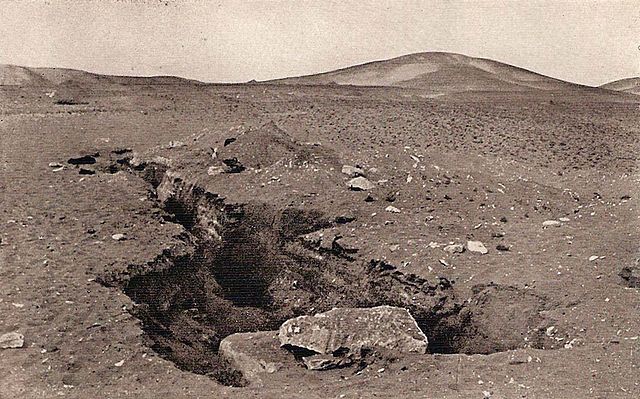Amenemhat IV was the seventh and penultimate king of the late Twelfth Dynasty of Egypt during the late Middle Kingdom period. He arguably ruled around 1786–1777 BC for about nine regnal years.
Small gneiss sphinx inscribed with the name of Amenemhat IV that was reworked in Ptolemaic times now is on display at the British Museum.
One of the naos from the funerary temple of Amenemhat III at Hawara, now located in the Egyptian Museum at Cairo. The left figure, flexing his arm across his chest in order to bring a sign "ankh" (life) to the face of his partner, is Amenemhat III. The king on the right is Amenemhat IV.
The remains of the Southern Mazghuna pyramid, possibly Amenemhat IV's tomb
Small obsidian coffer bound in gold and bearing Amenemhat IV's titulary from the Royal necropolis of Byblos
The Twelfth Dynasty of ancient Egypt is a series of rulers reigning from 1991–1802 BC, at what is often considered to be the apex of the Middle Kingdom. The dynasty would periodically expand its territory from the Nile delta and valley South beyond the second cataract and East into Canaan.
Fragment of a statue of Amenemhat III 12th Dynasty c. 1800 BC State Museum of Egyptian Art, Munich
A figure wearing the red crown of Lower Egypt and whose face appears to reflect the features of the reigning king, most probably Amenemhat II or Senwosret II. It functioned as a divine guardian for the imiut, and it is wearing a divine kilt, which suggests that the statuette was not merely a representation of the living ruler.
Head of Senusret III with youthful features, 12th Dynasty, c. 1870 BC, State Museum of Egyptian Art, Munich
Sobekneferu was the last ruler of the 12th Dynasty








